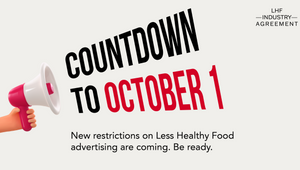
Strong Rebound from Pandemic Losses Forecast for UK AD Market

The latest Advertising Association/WARC Expenditure Report, the only source to collect advertising revenue data across the entire media landscape, forecasts UK adspend will grow by 15.2% this year to reach a total of £27.0bn. This will recover the entirety of 2020’s £1.8bn decline and is expected to precede a 7.2% rise in 2022, by when the market will be worth a record £29.0bn.
Ancillary forecasts suggest the UK is on course to achieve the strongest ad trade recovery of any major global market this year, and this puts the UK economy in a position to bounce back strongly post-pandemic, as every pound invested in advertising generates six in GDP.
Adspend growth forecast for all media in 2021
Particularly strong results are expected for the media most adversely affected by the pandemic, namely cinema at +266.8%, digital out of home at +52.3%, and traditional out of home at +14.5%. Online classified investment is set to rise by a fifth (20.4%), supported by increased recruitment activity arising from brighter economic prospects this year.
Other media are not expected to recoup 2020’s losses until next year, however. This is true of TV (up 8.8% in 2021), direct mail (up 6.4%) and publishing disciplines encompassing national news (up 7.3%), regional news (up 3.9%) and magazine brands (up 6.8%).
Online display – inclusive of social media and online video – is set to see growth accelerate this year (+13.4%), as is the case for paid search (+18.4%). Taken together, these two sectors are expected to account for two-thirds (66.4%) of all UK advertising spend this year, up ten percentage points from a share of 56.2% in 2019.
The full picture in 2020
The latest dataset includes final figures for Q4/FY 2020, which show spend on advertising declined by 7.2% to a total of £23.5bn last year. The decline in 2020 was softer than that following the Great Recession at the total market level, but most media owners recorded significant reductions in spend. In a positive end to last year, spend rose 2.6% during the final three months, resulting in the highest quarterly total on record (£7.0bn).
The key findings for 2020 show a strong shift by advertisers into online video, social media and search markets, in a move part-reflective of the rapid acceleration of e-commerce, as lockdowns forced consumers to purchase goods and services from home. Spend on paid search went up 7.1%, online display rose by 10.4%, and TV VOD was up 15.7%. There was a small increase (0.5%) for online newsbrands, though other media saw sharp declines.
The UK’s advertising industry was well-positioned for the challenges of the lockdown, as it already had one of the most developed digital ad markets in the world. The UK's average weekly value of e-commerce spend rose 47.1% in 2020, to £2.1bn, which equated to 27.9% of all retail sales latest year – ahead of key international markets. For the first time, the UK was the country with the largest e-commerce share as a percentage of total retail spend. China’s equivalent figure was 24.9%, the EU was 20.0%, and the US was 14.0%.
Among individual product categories, Government adspend grew 37.2% during 2020 as public health messaging was deployed in the effort to combat COVID-19. As normality returns, this spend is expected to fall back in 2021, with growth instead expected across the other main consumer categories, notably services (up 22.0%), industrial (up 19.8%) and financial (up 20.2%).
Stephen Woodford, chief executive, Advertising Association commented: “Advertising investment has mirrored the rapid changes seen across the economy over the last year, primarily the acceleration provided by lockdowns towards e-commerce across all sectors able to sell online. The pandemic accelerated trends that were already changing the market, evident for several years. The UK’s sophisticated online advertising marketplace helped to keep the economy moving and, no doubt, supported businesses, large and small, to stay connected with consumers who were no longer on the high street. SMEs that had little or no online presence quickly adapted to serve their customers via online platforms and more sophisticated online businesses increased their investment behind these.
“Across the economy that advertising serves we saw remarkable innovation and agility, which helped to lessen the economic impact as firms adapted to keep serving their customers, despite the disruption. The predicted growth this year of 15.2% is good news, with every £1 of advertising spend generating £6 of GDP, this will be a welcome boost for jobs and growth in the wider economy.”
James McDonald, head of data content, WARC commented: “The data from 2020 were unlike any we have seen in our 40 years of market monitoring. Save for a flock of online pure-players, the majority of media owners surveyed by WARC experienced their worst trading climate in living memory. This was true at both the financial and the human level – many will not witness a full recovery until 2022 at the earliest.
“Agile formats with short lead times were seen to flourish last year, particularly within social media and e-commerce environments, the latter benefiting greatly from stay-at-home orders and well-established logistical networks. Media owners in these spaces are expected to build on good 2020 results this year, though the situation will be more challenging across the remainder of the landscape as ad investment continues to favour performance marketing.”

The Advertising Association/WARC quarterly Expenditure Report is the definitive guide to advertising expenditure in the UK with data and forecasts for different media going back to 1982.















